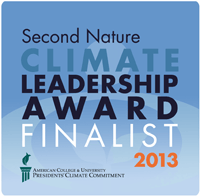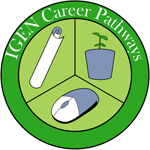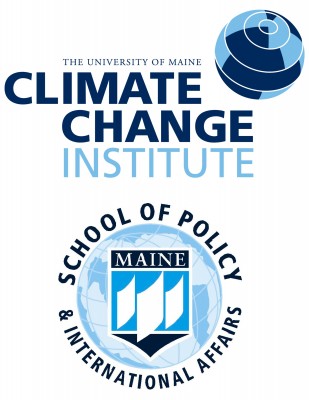By Jairo Garcia, Kresge Implementation Fellow, Second Nature (This article appears in the February, 2013 issue of The ACUPCC Implementer)
 My name is Jairo Garcia and I am thrilled to be part of the Second Nature team as the ACUPCC Implementation Fellow. My primary responsibilities are to assist and support Minority-Serving Institutions (MSIs) and Under-Resourced Institutions (URIs) signatories of the ACUPCC to advance your institution’s commitment to carbon neutrality, implement sustainability practices in curricular initiatives and support your community partnerships. Also joining the Second Nature team is Axum Teferra. Axum is the ACUPCC Recruitment Fellow, and will be sharing responsibilities in providing implementation support. Our positions were made possible by The Kresge Foundation through Second Nature’s “Sustainability Leadership, Capacity Building and Diversity Initiative”.
My name is Jairo Garcia and I am thrilled to be part of the Second Nature team as the ACUPCC Implementation Fellow. My primary responsibilities are to assist and support Minority-Serving Institutions (MSIs) and Under-Resourced Institutions (URIs) signatories of the ACUPCC to advance your institution’s commitment to carbon neutrality, implement sustainability practices in curricular initiatives and support your community partnerships. Also joining the Second Nature team is Axum Teferra. Axum is the ACUPCC Recruitment Fellow, and will be sharing responsibilities in providing implementation support. Our positions were made possible by The Kresge Foundation through Second Nature’s “Sustainability Leadership, Capacity Building and Diversity Initiative”.
I would like to share my journey that has led to my passion for education for sustainability. I grew up in an  economically challenged neighborhood in Bogota, Colombia, surrounded by drug dealers and violence. I vividly remember the sole tree almost a mile from my house and the Bogota River, infamously recognized for being one of the most polluted rivers in the world. These were my only two contacts with nature in the middle of Bogota’s ever-expanding urban metropolis. To escape from the glooms of my reality, I submerged myself in books and dreamed about a better world where we all could live and prosper with dignity and in harmony with nature.
economically challenged neighborhood in Bogota, Colombia, surrounded by drug dealers and violence. I vividly remember the sole tree almost a mile from my house and the Bogota River, infamously recognized for being one of the most polluted rivers in the world. These were my only two contacts with nature in the middle of Bogota’s ever-expanding urban metropolis. To escape from the glooms of my reality, I submerged myself in books and dreamed about a better world where we all could live and prosper with dignity and in harmony with nature.
My family
My graduation thesis at the technical institute received prestigious recognitions and after completing my engineering degree, I was offered the opportunity to work for a Colombian company in New York City. To obtain USA professional credentials, I pursued in evenings a Telecommunications Certification program at La Guardia Community College. This program allowed me to find a job with a multinational organization in the heart of Manhattan. A few years later, I completed a
It was through these numerous travels that I came to the realization that environmental degradation is not limited to Bogota or New York, but it is evident across the globe;
During this time I was pursuing a doctorate in technology, but after my trip to Peru, I switched my topic to sustainability in higher education. My focus was on universities in Costa Rica because of their leading role in sustainability education in developing countries. As a byproduct of my research, I was able to create awareness at many universities in Costa Rica about the critical need to prioritize resources for sustainability in education. I was able to present the results of my research at the AASHE
Although sustainability should be taught at all levels of education, the critical condition of our planet requires immediate action. Higher education institutions are in a privileged position because of their intrinsic function to form our next generation of scientists, educators, and decision makers. As such, these institutions play a fundamental role in changing our path from degradation to a sustainable future, in which all humans should be able to live and prosper in harmony with each other and with the rest of the natural world; however, this education must be carefully designed. David Orr, distinguished Professor of Environmental Studies and Politics at Oberlin College, stated that without significant precaution, “education can equip people merely to be more effective vandals of the earth”. This education, according to Orr, must include principles of social-economic and environmental values and ethics, “a commitment for the preservation of life and an attachment to health, harmony, balance, diversity, peace, participation, and justice”.
My passion for sustainability in education lead me to the Earth Institute at Columbia University as a Research Intern Associate. One of my functions was to assist the Institute in the development of curricula in the areas of sustainability metrics and climate change adaptation. I also completed a Masters of Science degree in Sustainability Management, served as the Vice President of Academic Affairs for the Student Association, was employed as a teaching assistant for two Earth Institute graduate classes, was co-founder and special advisor for the Columbia University Coalition for Sustainable Development, collaborated in the organization of the New York+20 conference, and worked closely with Earth Charter International, for which I presented a webinar about sustainability education and the ethics of sustainability.
Last year, I was the recipient of the Columbia University Innovation Scholarship Award, which is awarded only to those who have demonstrated a commitment “to transform knowledge and understanding in service of the greater good, defined as a just, sustainable, and compassionate global society”.
It is clear to me, that this professional journey could not have been possible without the support of those small and under-resourced institutions that helped me in the moments when I needed them the most. I truly feel a moral obligation to give back to them. Thanks to the Kresge Foundation grant, the Recruitment Fellow and I will be able to fully dedicate our time in providing capacity building opportunities and implementation guidance to these institutions in their efforts to achieve carbon neutrality. We will also be able to assist these institutions with implementing programs in sustainability in order to provide their students with the tools, knowledge, and ethics necessary to construct a just and sustainable future for all.
Please feel free to contact me at any time at jgarcia@secondnature.org.


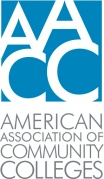
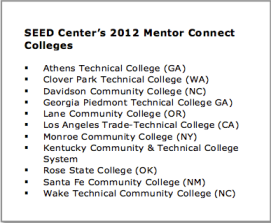
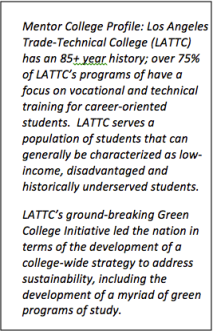
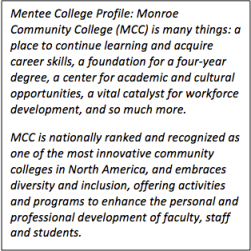

 The opening words of the
The opening words of the 